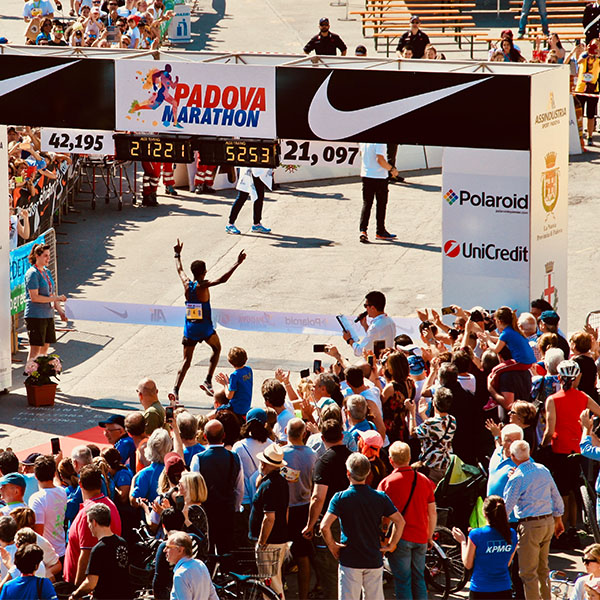“You practise like you play, little things make big things happen” – Tony Dorsett
A suitable practice environment has the potential to turn a good athlete into a great one. When an athlete feels comfortable and happy in the place that they train, they’re free to perform at their best. Your role as a coach is very important here, as you have the power to create this environment and foster growth and development for your athletes.
So, what exactly is your role in building the ideal practice environment, what does it look like, and what can you do to create it for your athletes? Here’s what we know from sport psychology research…
The coach’s role in creating a good practice environment
Research has shown that the coach has a huge part to play in creating a positive and nurturing environment for their athletes. These responsibilities include:
- Helping athletes deal with frustration during training and competition
- Teaching them to respect their teammates, the opposition, and officials
- Helping them build their confidence, self-esteem, self-worth, and self-belief
- Ensuring they enjoy their training and competitions
- Teaching optimism, resilience, and perseverance
- Teaching them how to lose well
A positive sports environment is thought to be a by-product of the leadership it has. This means that you have a huge role to play in creating the ideal practice environment as a coach, if you want to get the best performance out of your athletes.
What does a good practice environment look like?
Research has looked at what the ideal practice environment looks like from an athlete’s perspective.
A good practice environment is one where athletes feel their training is enjoyable – they are having fun learning and developing skills. They should feel enthusiastic about attending practice, almost to the point where they don’t want to leave!
Athletes should be gaining confidence through positive feedback, but they must also understand that receiving constructive criticism is an opportunity to learn. Success needs to be defined using goal setting to give them an understanding of what they are working towards and what their sense of purpose is.
It’s not just the training environment that you need to consider here. Outside of training, athletes should feel they are able to practise without you present, as this gives them responsibility and increases their dedication to the sport.
Why is creating a good practice environment so important?
If you find that your athletes define success purely as winning, this could be a sign of an unhealthy practice environment. Having this mindset comes with a lot of pressure to deliver on the day, which can really decrease performance.
If the main focus of training is placed on winning at all costs, players can become extrinsically motivated and will then be less likely to engage in their tasks. You should try to create an environment that is more focused on preparation and performance, and how the athlete is improving. This puts less pressure on them to deliver and ultimately brings out the best in their performance.
Athletes shouldn’t feel nervous about training, because high levels of anxiety can lead to poor performance. Try to create an environment that fosters low anxiety levels and makes the athlete feel comfortable.
Fundamentally, a good practice environment is one that sets the athlete up for optimal performance. You want the athlete to feel as comfortable as possible whilst they are training and make them really want to do the sport out of enjoyment.
How to create the ideal practice environment
It’s important to understand what a good practice environment looks like, but how can you actually create one? Here are some tips that are sure to help you get the best out of your athletes…
- Don’t be a helicopter coach
Someone who is described as a “helicopter” is controlling, over-involved and hovers over another individual. Helicopter coaches will watch over their athletes’ every move, which can make the athletes very nervous.
Having someone watch over what you’re doing increases the pressure to perform – and so by doing this to your athletes, you will make them perform in a nervous manner and they won’t achieve their best.
Allow your athletes to put in extra work after practice when you are not present. This will help increase their intrinsic motivation, which is associated with greater persistence and lower dropout rates.
- Use constructive criticism
As a coach, you should provide your athletes with specific feedback with the aim of improving their performance. Whilst athletes love being told what they’ve done well and get higher motivation levels out of it, it’s just as important for them to receive constructive criticism in order to make changes and keep getting better.
One study recommends that you use the “sandwich technique” to deliver feedback to your athletes. This means opening with positive feedback, following it with what needs improvement, then ending on something else positive that they athlete did. This allows a feedback session to end on a good note and will make your athletes more responsive and well-disposed to criticism.
- Use competitive drills during training
Competitive drills are a great way to create a good sporting environment, because the nature of sport is competitive. You are trying to replicate that match-day energy that your athletes will feel in game situations, as well as foster a determination to succeed.
Getting your athletes to compete against each other is great, but you could also get them to work as a team against the clock. This will create unity amongst your athletes and helps them prepare to work well together in a competition setting.
- Listen to your athletes’ concerns and show them that you care
Your athletes should feel able to come to you and discuss their concerns. It’s important that you show them you care not just about how they perform, but about how they are feeling and what’s going on inside their head.
Listen to their concerns with compassion and be engaged in what they are saying – you are trying to make them feel comfortable in their training environment, and they shouldn’t be afraid to talk to you about any issues they have regarding their training or competition.
If your athletes bottle up their emotions, this will negatively affect their sporting performance because they will find it more difficult to focus during training and competition. Try to avoid this by allowing your athletes to open up to you.
- Set well-defined specific goals with your athletes
This will create a drive to succeed and keep your athletes motivated.
Short-term goals are good to increase motivation because it helps us feel as though we’re achieving something – they give us an ongoing sense of purpose and let us know that our long-term goals are on track.
You could also try setting SMART goals (specific, measurable, achievable, relevant and time-bound) with your athletes. This is a good way to monitor their progress and give your athletes something to work towards.
Final thoughts
Creating a good practice environment for your athlete is essential for giving them the best chance of success. If you can make them enjoy what they do and love coming to training, good performance will be a natural result.
We hope that by following these tips, you can make your athlete feel comfortable and well-supported whilst they are training, setting them up for victory.





